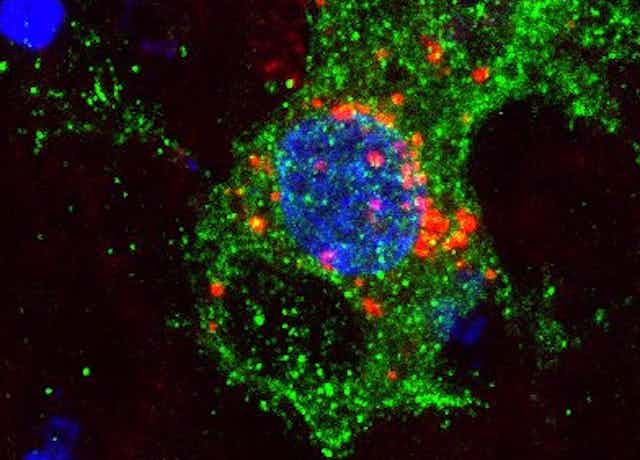Week 8: Nanotech + Art
Week 8: Nanotech + Art
The use of nanotechnology has had an impact on the medical field which is a connection we had previously made on the medicine and art fields. In the Part 4 Lecture, Dr. Gimzewski introduce the development of nanodrugs and its reaction to the human body. He stated that the first nanodrug sanctioned was Abraxane which targeted breast cancer. Nanomedicine is able to target small cells to target those damaging the tissues without harming any of the healthy cells. Nanomedicine is an interesting development because it is also used for imaging, diagnostics, and therapeutics.

Dr. Gimzewski furthered his lecture by presenting quantum dots. Quantum dots are nanoparticles that can be injected in cells to label specific biomolecules. Quatue dots are also able to detect cancer in earlier stages because it is able to target smaller cells. On the other hand, MRIs are able to detect the tumors once it has spread. This shows how quantum dots can help humans however, there are some disadvantages as it being expensive equipment. Quantum dots portray different colors which can be shown depending on the different sizes and shape that it detects, Usually those in a larger size. are showcase orange and red while smaller sizes are blue and green.
Nanotechnolgy isn't as harmful to the body as chemotherapy because as stated before its able to target the demoing cells leaving the healthy ones to spare. It also helps doctors find the location of cancer in the blood as opposed to tests that cannot. The treatment only works once it has a detected a cancer cell allowing for the healthy cells to live. Chemotherapy target the tumor and what is around which is why it is more draining to the body.

Citations:
1. Huang, Stephen Huang & James. “Nanomedicine: The next Breakthrough in Oncology?” PharmaTimes, PharmaTimes Media Limited, 23 Apr. 2018, https://www.pharmatimes.com/magazine/2018/may_2018/nanomedicine_the_next_breakthrough_in_oncology.
2. Mengying Zhang PhD Candidate in Molecular Engineering and Sciences. “Quantum Dots That Light up Tvs Could Be Used for Brain Research.” The Conversation, 5 Apr. 2021, https://theconversation.com/quantum-dots-that-light-up-tvs-could-be-used-for-brain-research-123743.
3. Frysh, Paul. “What Are Monoclonal Antibodies?” WebMD, WebMD, https://www.webmd.com/cancer/guide/monoclonal-antibodies.
4. MD Anderson Cancer Center, and Shanley Chien. “Nanomedicine: Small Particles with Huge Possibilities for Cancer Care.” MD Anderson Cancer Center, MD Anderson Cancer Center, 10 Feb. 2021, https://www.mdanderson.org/cancerwise/nanomedicine-research--small-particles-show-huge-possibilities-for-cancer-care-and-treatment.h00-159458478.html.
5. uconlineprogram. “Nanotech Jim PT4.” YouTube, YouTube, 21 May 2012, https://www.youtube.com/watch?v=yHCuZetAIhk&t=312s.
Comments
Post a Comment